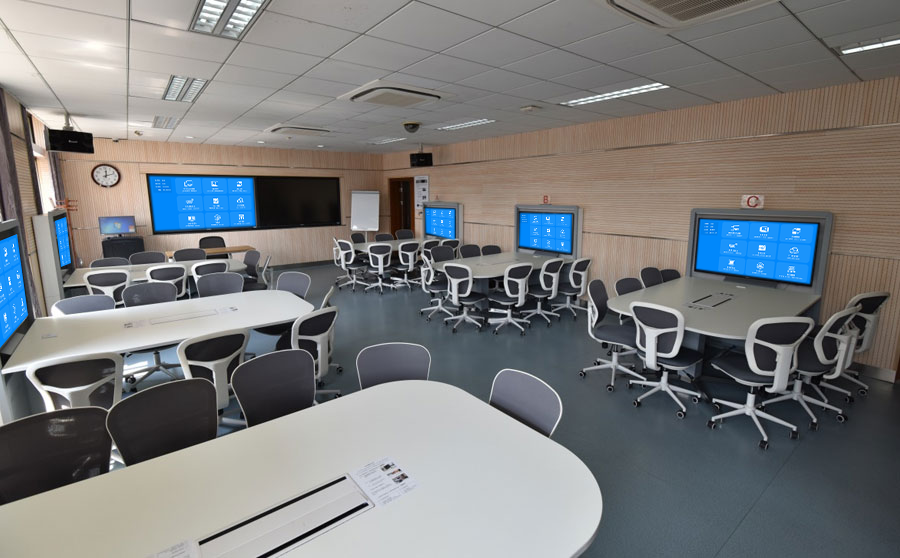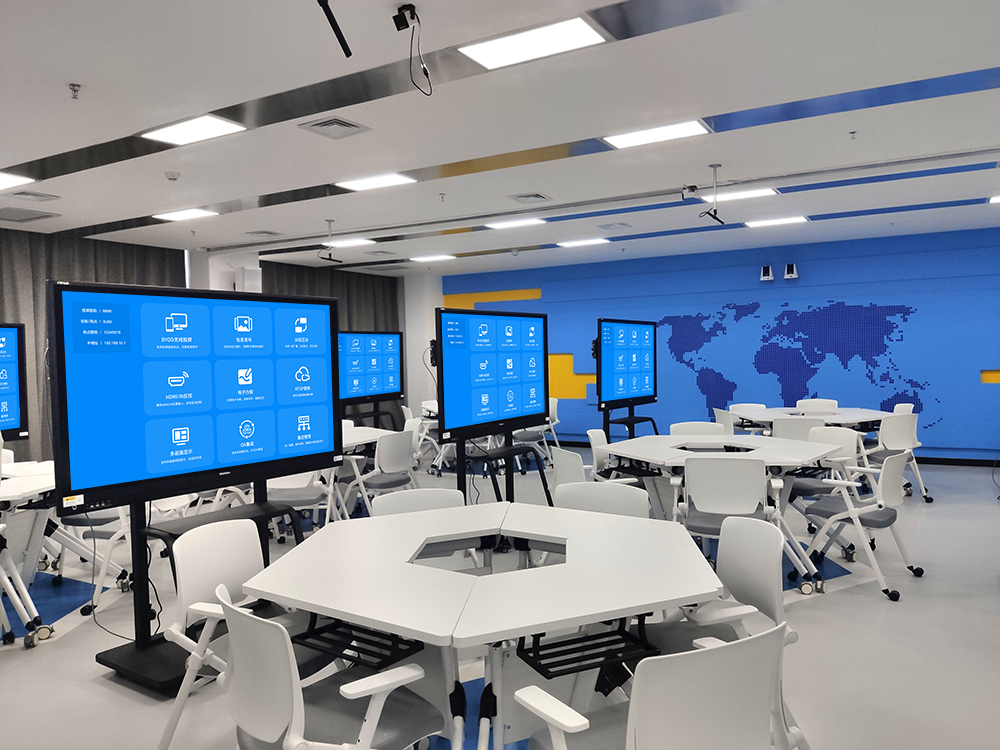Multi-Screen Interaction: A Cross-Device Collaboration Solution
This multi-screen interaction solution breaks down the barriers between phones, computers, tablets, and large screens, allowing for a seamless flow of content and complementary functions. With no complicated steps, it can meet the needs of office collaboration, classroom interaction, and home entertainment, making information transfer more efficient and interaction more flexible.
Universal Device Compatibility, Zero Connection Barrier
It covers Android/iOS phones, Windows/macOS/Linux computers, tablets, and various smart large-screen devices (TVs, projectors, meeting displays). All devices, new or old, from different brands, can connect smoothly. The connection methods are flexible and diverse:
- Fast Wireless Connection: Use native system functions (“Wireless Display” on phones, “Project” on computers, “Screen Mirroring” on Apple) or a QR code to pair. You’ll be connected in 3 seconds without installing any apps.
- Wired Backup: It supports HDMI, Type-C, and DP interfaces for a plug-and-play experience. Older devices can easily connect, avoiding the hassle of an unstable wireless signal.
- Automatic Matching: Frequently used devices will get a pop-up to connect when they’re nearby, so you don’t have to search repeatedly. With a compatibility rate of over 95%, anyone can get started quickly.

Core Interactive Functions, Unleashing Value
1. Free-Flowing Content Across Screens
It supports “one-to-multi,” “multi-to-one,” and “two-way transfer.” In the office, a computer can mirror a proposal to a large meeting screen and simultaneously send it to a colleague’s tablet for annotations. For home entertainment, you can batch-mirror photos from a phone to a TV, and you can also save a video playing on the TV to your phone with one click. In the classroom, a teacher can mirror a lesson to the main screen, and students’ tablets can receive it at the same time for post-class review. Content transfer doesn’t require a USB drive or other file transfer tools. It can be done with a simple drag-and-drop or a tap, eliminating the hassle of exporting and importing files.
2. Complementary Multi-Screen Functions
- Extended Screen Collaboration: You can set a tablet as a “secondary screen” for your computer to write a report on one screen and look up information on the other. You can also use your phone as a “remote control” for a large screen to control playback and switch content from the comfort of your seat.
- Cross-Screen Control: You can use a computer’s mouse to operate your phone to reply to messages and organize files without having to switch devices frequently. A teacher can use a stylus on a tablet to annotate a mirrored lesson, and the annotations will be displayed on the large screen in sync, making the operation more flexible and precise.
- Multi-Device Annotations: In meetings and classes, multiple people can annotate the same document on different devices. Highlights drawn with a red pen and text edits will be synchronized to all screens in real time, making brainstorming more intuitive. The annotated results can be saved as a PDF and shared with one click.
In-Depth Adaptation for Multiple Scenarios, Boosting Efficiency and Experience
- Office Collaboration: When a team is working on a project, members can use their own devices for their specific tasks. One person can use a computer to create a presentation outline, another can use a phone to take photos of on-site materials, and a third can use a tablet to design graphics. All content is compiled on the large screen in real time, so everyone can see the progress. In a remote meeting, a phone can mirror the on-site view, and a computer can mirror the proposal details. The large screen displays both contents together, and remote colleagues can annotate on their tablets. This makes collaboration feel like it’s happening in the same room and boosts decision-making efficiency by 40%.
- Classroom Interaction: A teacher can use a computer to explain a concept and simultaneously use a tablet to display a video of a lab experiment. The large screen combines both contents, so students can understand things more thoroughly. During a group discussion, each group can use a tablet to organize its ideas, and the results can be mirrored to a public large screen for the whole class to critique. A student can take a photo of a question with their phone and mirror it to the large screen, and the teacher can explain it on the spot. This makes class interaction more lively and the transfer of knowledge more efficient.
- Home Entertainment: On a weekend at home, you can mirror a show from your phone to the TV, and your tablet can simultaneously show the comments and interactions. The whole family can watch and talk together. When helping your child study, you can mirror an educational cartoon to the TV and use your phone to remotely control playback and pause to explain things. At a family gathering, multiple people can take turns mirroring games and short videos from their phones to the TV, so no one has to huddle around a small screen to share the fun.
- Commercial Presentations: At a retail counter, a salesperson can use their phone to mirror a product’s 3D model and user reviews to a display screen, while a customer can use a tablet to check detailed specs. At an exhibition, multiple tablets can receive product information from a large screen, and visitors can annotate questions to interact with the salesperson. This makes the presentation more interactive and boosts customer conversion rates by 35%.
Smart Management, Secure and Convenient
- Access Control: An administrator can set device interaction permissions in a backend, specifying which devices can transfer content to each other and whether cross-screen control is allowed, which prevents unwanted interference. It supports a “device whitelist” and a “temporary authorization code,” so external devices must be authorized to connect, which protects content privacy.
- Remote Maintenance: It offers real-time monitoring of the operational status of all devices (online status, number of connections, and signal strength). It also supports remote on/off and firmware upgrades, with no on-site maintenance required, which reduces maintenance costs.
- Scenario Presets: You can preset “meeting mode,” “teaching mode,” and “entertainment mode” to switch device parameters (like resolution, volume, and annotation permissions) with one click, adapting to different needs.
There’s no complex wiring needed. Devices can be used just by connecting to the network, and daily maintenance is not a burden. Whether for an enterprise, a school, or a family, this multi-screen interaction solution can fully utilize the advantages of each device, achieving a collaborative value of “1+1 > 2.”